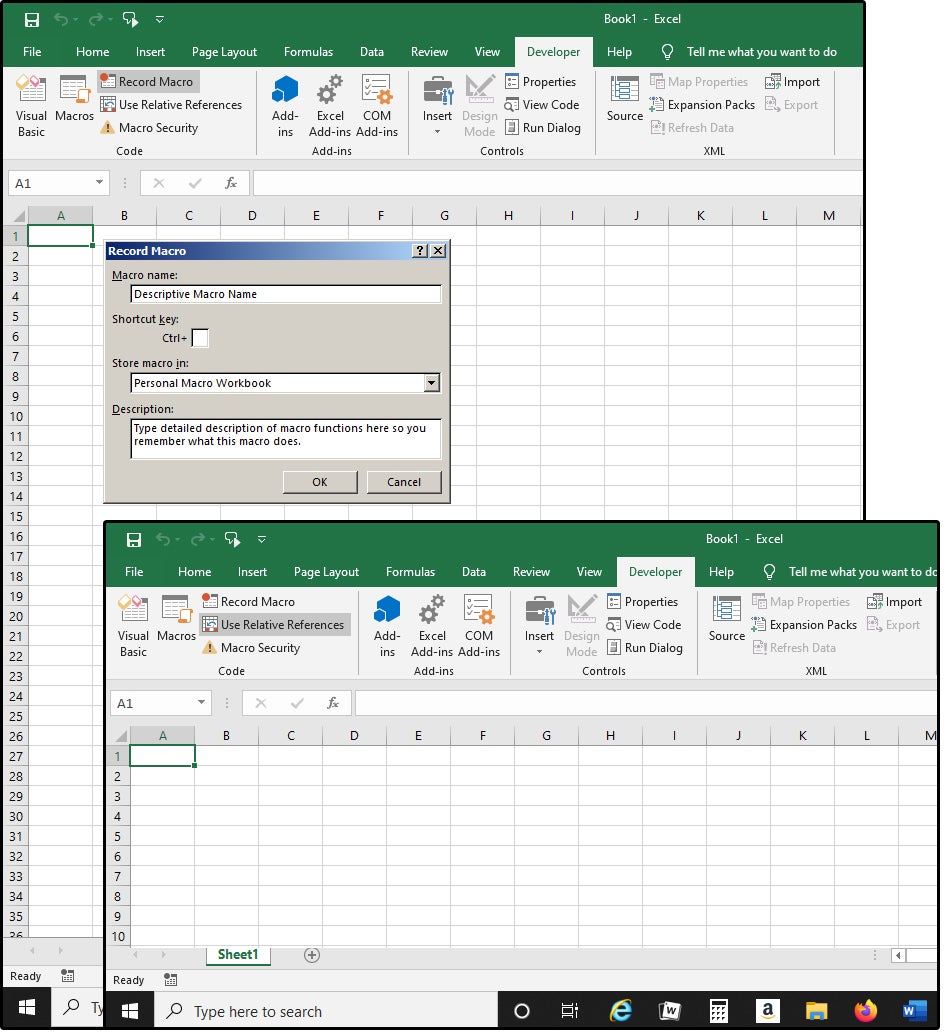5 Simple Steps to Add Excel Sheets with Macros

Ever found yourself in need of streamlining your workflow by automatically adding sheets to your Excel workbook? Whether you're organizing data, setting up templates, or managing large datasets, this can be achieved effortlessly with the help of Excel's powerful feature: Macros. Here's a comprehensive guide on how to add Excel sheets using macros, ensuring you handle your data like a pro.
Why Use Macros for Adding Sheets?

Before we dive into the steps, let’s consider why macros are the go-to tool for this task:
- Automation - Speed up repetitive tasks.
- Consistency - Ensure every sheet has the same setup or format.
- Efficiency - Reduce manual work, minimizing the chance for errors.
Step 1: Accessing the Developer Tab

To start working with macros, you need to have access to the Developer Tab in Excel. Here’s how you can enable it:
- Open Excel.
- Go to File > Options.
- Select Customize Ribbon.
- Check the box next to Developer in the right column, under Main Tabs.
- Click OK.
Now, you should see the Developer Tab in your ribbon.
Step 2: Recording a Macro to Add a Sheet

Let’s create a simple macro that adds a new sheet:
- From the Developer Tab, click on Record Macro.
- Provide a Macro name, like “AddSheetMacro”.
- You can assign a shortcut key for quick access.
- Under “Store Macro in:”, choose “This Workbook”.
- Click OK to start recording.
- Perform the actions you want the macro to record:
- Right-click on any existing sheet tab.
- Select Insert and then choose Worksheet.
- After adding the sheet, click Stop Recording on the Developer Tab.
Now, your macro is ready to add sheets at the click of a button!
Step 3: Viewing and Editing Your Macro

To see or edit the code behind your macro:
- On the Developer Tab, click Visual Basic.
- In the VBA Editor, find your macro under “Modules” in the “Project Explorer” window.
- Double-click on the module to open the code.
- You’ll see something like this:
Sub AddSheetMacro()
Sheets.Add After:=ActiveSheet
End Sub
Step 4: Running the Macro

To use your macro:
- With the Developer Tab active, click Macros.
- Choose your macro from the list and click Run.
If you assigned a shortcut key, you can also use that to run the macro directly.
Step 5: Automation and Customization

For those looking to automate the process further:
- Create a button or form control to run your macro at the click of a button:
- Go to Developer > Insert > Button.
- Draw the button on the sheet.
- Assign your macro when prompted.
- To add multiple sheets at once, modify the macro:
Sub AddMultipleSheets()
Dim i As Integer
For i = 1 To 3 ‘Add 3 sheets
Sheets.Add After:=ActiveSheet
Sheets(Sheets.Count).Name = “Sheet” & i
Next i
End Sub
📝 Note: Always test macros in a copy of your workbook to avoid unintended changes to your data.
In wrapping up this guide, we’ve navigated through the process of using macros to add sheets in Excel, emphasizing efficiency and automation. From enabling the Developer Tab to recording, editing, and running your macros, we’ve covered the essentials to help you manage your spreadsheets with greater control. The beauty of macros lies in their adaptability; whether it’s adding one or multiple sheets or customizing them to fit specific tasks, the control is at your fingertips. This not only saves time but also ensures accuracy and uniformity across your data management tasks.
Now, let’s take a look at some common questions you might have:
Can I share workbooks with macros?

+
Yes, you can share workbooks containing macros. Ensure the macros are saved in the workbook and that the recipient has the necessary security settings to run macros. However, always caution others about enabling macros from sources they do not trust.
How do I run macros automatically when opening an Excel file?

+
To run a macro automatically when an Excel file opens, use the Workbook_Open event. Go to the VBA editor, right-click on “ThisWorkbook” under “VBAProject (Your Workbook Name)”, choose Insert > Module, and paste your macro with a different name. Then, in the “ThisWorkbook” module, write the following:
Private Sub Workbook_Open()
AddMultipleSheets
End Sub
What are the risks associated with using macros?

+
Macros can contain malicious code if sourced from untrusted or unsecured sources. Always be cautious when enabling macros from external files. Here are some security measures:
- Enable macro security settings to prompt for trusted publishers or digitally signed macros.
- Use digital signatures for your own macros to ensure they can run on other computers.
- Backup your workbook before running a new macro to avoid data loss.



